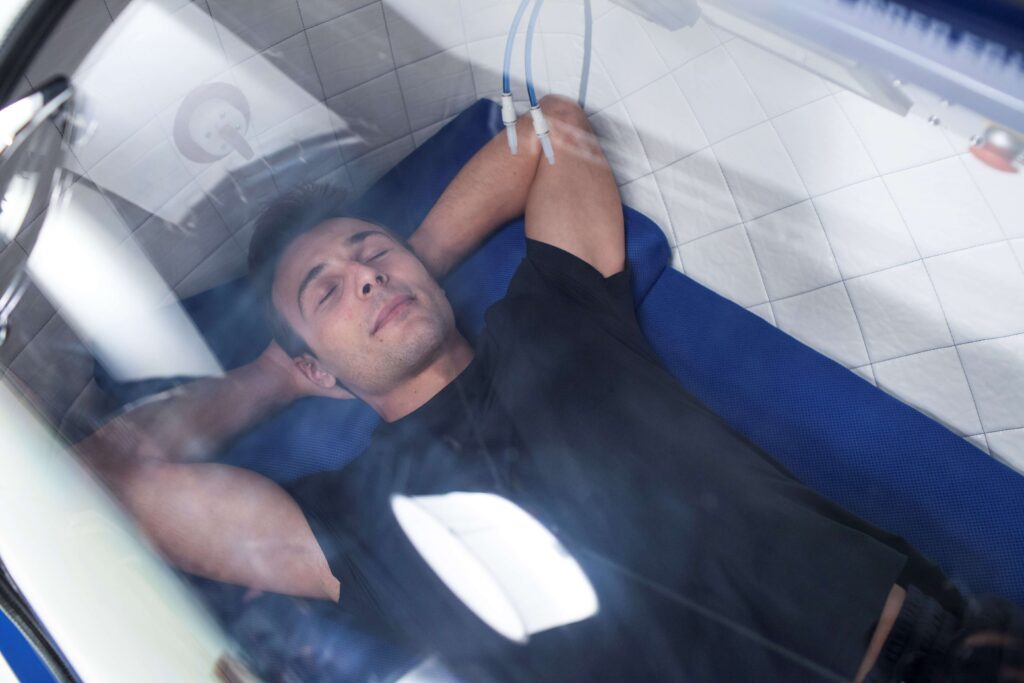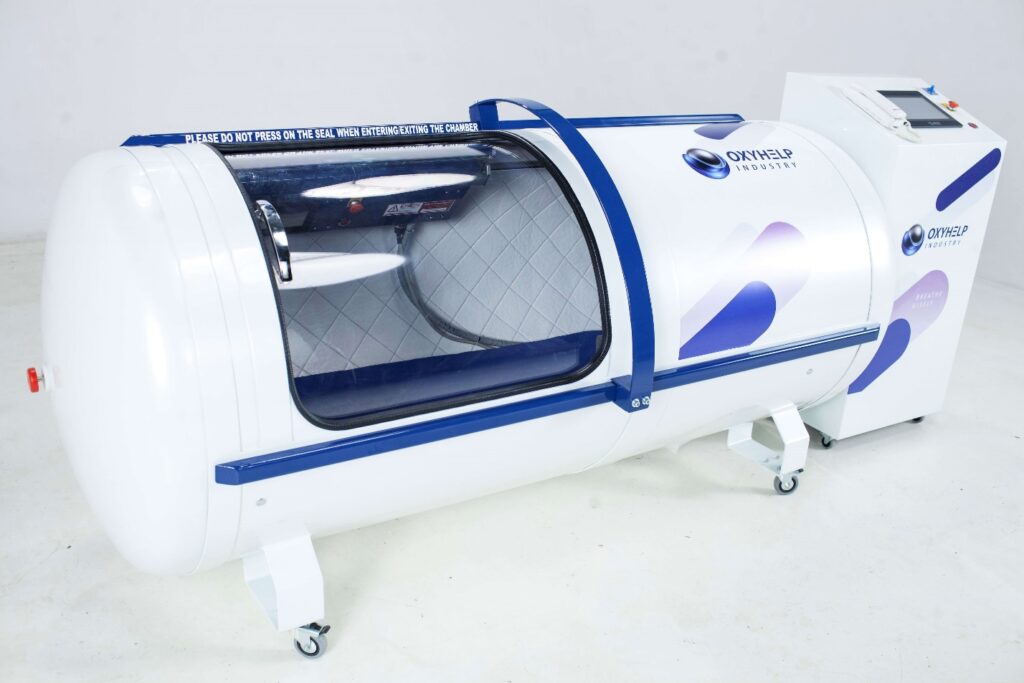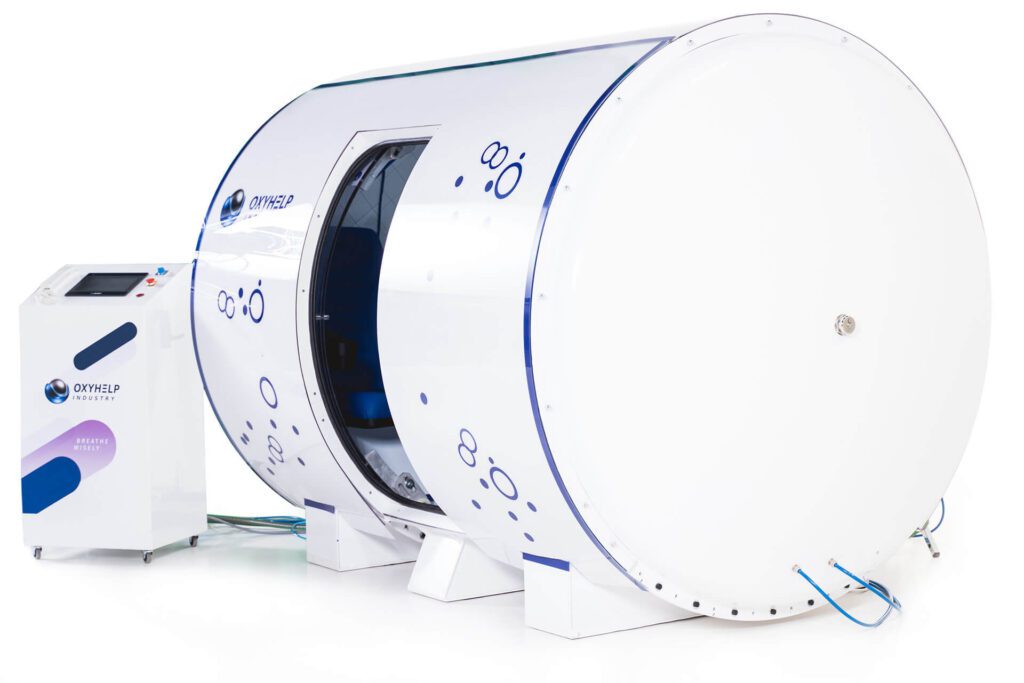Overview
Hyperbaric Oxygen Therapy (HBOT) is a protocol that involves breathing in oxygen in a pressurized environment. It is a well-known treatment that aids in boosting the healing processes of carbon monoxide poisoning, gangrene, and certain infections whereby the tissues are starved of oxygen.
To carry out this therapy, you’ll have to enter a special chamber to inhale pure oxygen at pressure levels of 1.5 to 3 times greater than average. The primary aim of this therapy is to congest the blood with needed oxygen to fix torn tissues and restore the body’s normal functioning.
We’ll have a closer look at the benefits of Hyperbaric Oxygen Therapy, alongside the various types and forms available in the market today. But before that, let’s have a quick look at the history of Hyperbaric Oxygen Therapy.
History of Hyperbaric Oxygen Therapy
Maybe you’ve never heard of Hyperbaric Oxygen Therapy or even think it’s a discovery yet to be tested or proven. Well, you’re wrong for thinking that way, as the science and practice behind this therapy form have existed for ages. Going back into history as far as the 1600s, you’ll notice that the use of chambers to treat different conditions by altering air pressure has also been practiced.
The first steps were taken by British physician and clergyman Nathaniel Henshaw. He postulated that placing a user under pressurized conditions will provide therapeutical benefits to various conditions of the lungs and may help in better digestion. He then created a chamber that he named “Domicilium.”
Hyperbaric Oxygen Therapy was first used in the 20th century in the U.S. Remember when most U.S deep-sea divers were diagnosed with decompression sickness? Well, it was Hyperbaric Oxygen Therapy that was used in curing them. In 1960, it was also tried again in battling Carbon Monoxide poisoning. Currently, Hyperbaric Oxygen Therapy is used to provide support and cure for scuba divers and persons suffering from carbon mono oxide poisoning.
What are the Benefits of HBOT?
Aside from tissue repairs to skin health, HBOT has proven beneficial in diverse ways.
- HBOT helps prevent “Reperfusion Injury” – Also known as ischemic reperfusion Injury (IRI) or reoxygenation injury; severe tissue damage occurs when blood supply returns to the tissue after they’ve been a period of total lack of oxygen or even ischemia. The deprivation of oxygen and nutrients from the blood during the ischemic period leads to a condition whereby the restoration of oxygen circulation causes inflammation and oxidative damage.
HBOT boosts the body’s oxygen radical scavengers to sort out problem molecules and ensure healing continues.
- HBOT fosters the build-up of new collagen and new skin cells by encouraging the growth of new blood vessels. HBOT also stimulates the secretion of vascular endothelial growth factor, which tends to attract endothelial cells responsible for healing.
- HBOT restricts the actions the harmful bacteria and boosts the body’s Immune system. It can get rid of the toxins of certain bacteria while also increasing the level of oxygen concentration in the tissues. This, in turn, boosts tissue health, strengthening them again infections.
- HBOT aids in speeding up wound healing processes – Wound injuries cause damage to the blood vessels. This leads to the secretion of fluids which leaks into the tissues, causing swelling. Hyperbaric Oxygen Therapy helps in reducing inflammation, providing a large volume of oxygen to the tissues.
Hyperbaric Oxygen Chambers
When talking about quality HBOT chambers, OXYHELP Hyperbaric Oxygen Chambers makes a perfect choice. Let’s have a look at the OXYHELP Hyperbaric Oxygen chambers here for a sec.
A Quick Look at OXYHELP Hyperbaric Oxygen Therapy Chambers
OXYHELP Hyperbaric Chambers are non-medical chambers built for use at home, spa, or even wellness centers. These chambers are designed and assembled in the European Union by highly trained, specialized engineers using premium components sourced after quality testing and considerations.
Unlike traditional chambers, the OXYHELP Hyperbaric Chambers are pressurized with air, not oxygen. This is because oxygen in high purity increases the possibility of an explosion. You can, however, breathe in oxygen through the chamber masks, which provide oxygen up to 95% purity using the oxygen concentrators it’s connected to.
In addition, the chambers can be used at a maximum of 2 ATMs. This is two times the normal atmospheric pressure. To ensure you make the best out of your OXYHELP HBOT chamber, a technician assists you in setting up your chamber whenever you order. He will also train you on how to properly use the equipment.
The OXYLIFE OXYHELP chambers consist of two types. These include;
- OXYHELP OXYLIFE I MONOPLACE HYPERBARIC CHAMBER
- OXYHELP OXYLIFE C MULTIPLACE HYPERBARIC CHAMBER
OXYHELP OXYLIFE I MONOPLACE HYPERBARIC CHAMBER
This is a premium-made Monoplace Hyperbaric chamber that delivers excellent results in little time. With these chambers, be rest assured that every therapy session is completely worth it. The OXYLIFE I is a worldwide accepted non-medical equipment that comes in an affordable price range with less running costs and maintenance.
The science and design of the OXYLIFE I low-pressure chamber are based on the user’s safety, comfort, and convenience. Made typically of aluminum, this chamber uses an Air filled system, with oxygen provided via a BIBS mask. It requires no oxygen cylinders and can also carry out automatic depressurization in case of a power outage.
Other notable features of the OXYHELP OXYLIFE I Monoplace Hyperbaric chamber include:
- It has mirrored commands both inside and outside of the chamber.
- Consists of two layers of air filters – 0.05 and 0.01 micrometers.
- Carries out a quiet operation (less noise both inside and outside the chamber).
- This chamber has an antibacterial interior that is internationally certified – Japanese SEK standards.
- It also consists of a patient-controlled ear pressure equalizer, dual over-pressure safety mechanism (Manual and software), medical-grade tubing, and emergency depressurization feature for both patient and operator.
OXYHELP OXYLIFE C MULTIPLACE HYPERBARIC CHAMBER
Unlike the OXYHELP OXYLIFE I chamber, the OXYLIFE C Multiplace chamber is ideal for multiple users’ use simultaneously. Users are either assisted by an observer or technician to ensure the therapy is as smooth as possible and in case of emergencies or electronic functions. As an added advantage, the Mini or Maxi Multiplace chambers can, however, fit cardio equipment like a stationary bike or accommodate up to 4 seats for users to experience a collective therapy session.
The OXYLIFE C Multiplace chamber is the only Multiplace chamber that fits through a standard doorway. This is because its three sections are quite small (70 cm X 190 cm) to pass easily through a standard-sized door frame for assembling inside a building without causing any damage to the building’s structure.
Other notable features of the OXYHELP OXYLIFE C Multiplace chamber include:
- Flexible seals, gaskets, and fluid sealing materials are fixed between modules and sections. This helps prevent gas leakages and pressure loss from the chamber.
- Foldable seats to allow for convenient space usage.
- This chamber accommodates up to five users.
- It’s constructed using modular parts that can be connected inside the therapy facility.
What Really Happens During Hyperbaric Oxygen Therapy?
During Hyperbaric Oxygen Therapy, the air pressure in the chamber is increased two to three times higher than the normal air pressure. Under this pressure, your lungs can accumulate more oxygen than would be possible under normal air pressure. Users relax, lie or sit comfortably in these chambers and breathe in deeply for up to 300 minutes, depending on the main reason for the operation.
During the therapy session, your blood carries the extra oxygen provided throughout your whole body, providing much oxygen for injured tissues so they can start healing.
NOTE
- When an HBOT session is finished, you may feel dizzy. Other mild side effects include claustrophobia, headaches, and fatigue. So it is recommended you’re always accompanied by someone who’ll take you home after HBOT.
- For better results, several sessions are often required, so it is required you check properly with your healthcare provider for better understanding.
Safety Measures for HBOT
It’s important to note that Hyperbaric Oxygen Therapy isn’t for everyone, as it isn’t recommended for people who;
- Had an ear injury or surgery
- Are suffering from certain types of lung diseases.
After an HBOT, you might get caught up with trauma to your middle ear. Other complications include;
- Low blood sugar
- Sinus issues
- Lung collapse
- Eye damage
In rare cases, a person can have oxygen poisoning, which may lead to seizures, lung failure, fluids in the lungs, and other severe issues. With all these complications, you should consult your healthcare provider before considering using an HBOT.
































